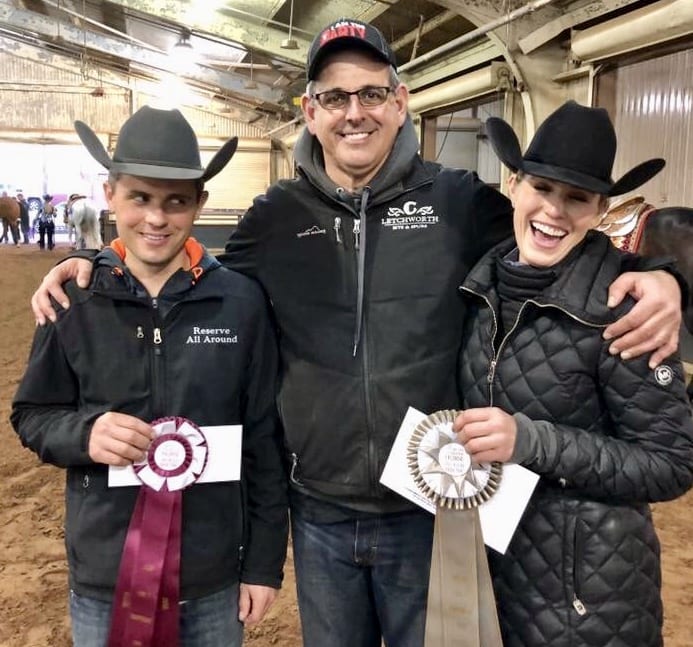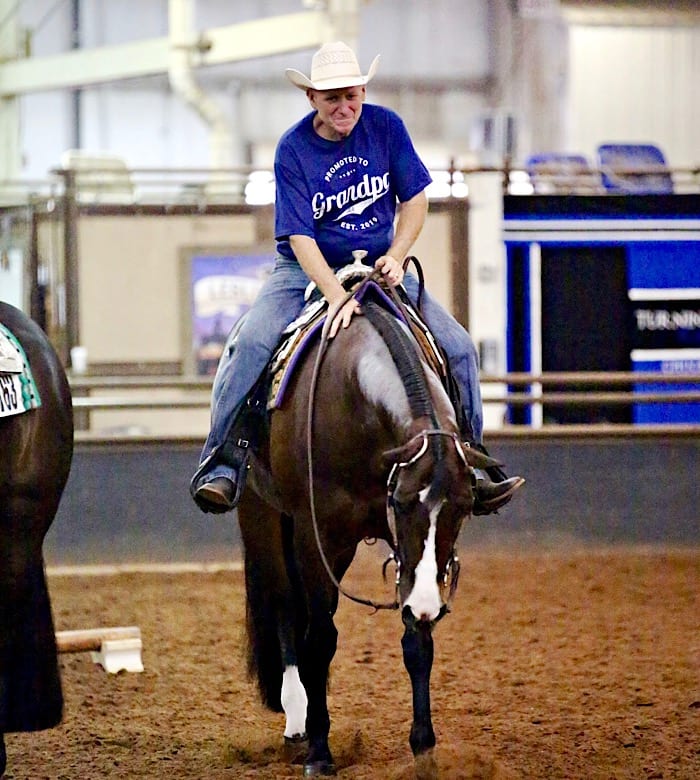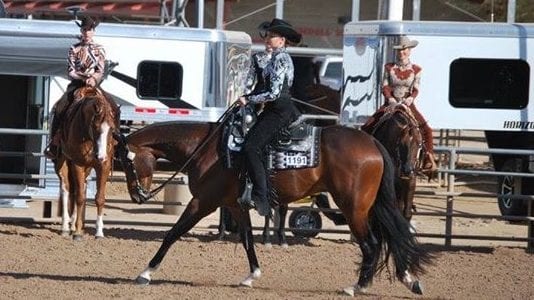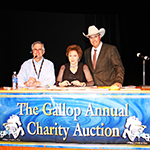Pattern classes are extremely popular among a variety of exhibitors. From showmanship to trail, pattern classes provide an opportunity to showcase the high levels of teamwork that competitors strive to achieve throughout the show season. A large portion of success in these events can be attributed to the riders, but their equine counterparts can be of equal importance when it comes to laying down a pattern that is pleasing to the eye.
While no horse can be considered perfect, there are certainly some that are better suited for patterns than others. Aside from the capabilities of the rider, what makes one horse superior to another when it comes to performing in the pattern classes? Is it age? Is it experience? What about bloodlines?
GoHorseShow had the opportunity to sit down with AQHA Professional Horsemen Gene Spagnola and Jeff Mellott to discuss the answer to these complicated questions.
Athleticism trumps bloodlines
When aiming to compete in classes such as western pleasure or hunter under saddle, ideal movement is essential. Because of this, certain bloodlines or particular crosses become more popular as they prove successful in the arena.
 However, this does not always hold true when searching for the perfect pattern horse. Just because a horse has a certain sire or dam, does not mean it will be fit to perform at the high level required to excel in a class like horsemanship or equitation.
However, this does not always hold true when searching for the perfect pattern horse. Just because a horse has a certain sire or dam, does not mean it will be fit to perform at the high level required to excel in a class like horsemanship or equitation.
Trainer Gene Spagnola of Powder Brook Farm (Pictured right – middle) preaches the importance of “the horse’s carriage, length of stride, suppleness and athleticism” that can come from any breeding.
Trainer Jeff Mellott of Highpoint Performance Horses echoed the sentiment of athleticism, saying that having a horse with good bloodlines “does not always mean that they are going to work,” and that he always looks to find an athletic horse for the pattern classes. Both trainers agree that bloodlines can never guarantee a horse’s suitability for patterned events.
It’s not always about the movement
While a well-moving horse certainly provides its rider an advantage from a presentation standpoint, in a horsemanship or equitation class, the horse’s movement is not judged. Spagnola says, “It’s more of a horse’s cadence and rhythm than it is their movement – more of how the horse carries itself. Though having a better mover gives you a better advantage.”
In other words, a horse whose legs move at a quicker pace will still have the ability to perform well in a horsemanship or trail class if he or she is well cadenced and has the strength needed to carry themselves to provide a smooth, eye-appealing ride.
Good mentality is essential
 Just as the athlete who lettered in three sports in high school has to have a confident attitude to pull off such an impressive feat, all-around horses must possess a high level of mental maturity to be able to perform what is asked of them willingly.
Just as the athlete who lettered in three sports in high school has to have a confident attitude to pull off such an impressive feat, all-around horses must possess a high level of mental maturity to be able to perform what is asked of them willingly.
“A horse with a good attitude or mindset will be more reliable, and in the long run, last longer than those that struggle with the mentality of the maneuvers,” Mellott (pictured left) told us.
All-around horses are consistently asked to think more to perform various complicated maneuvers than most rail horses. An especially sensitive or extremely stubborn horse may find the work unenjoyable, and therefore become an unwilling partner in the pattern classes.
Spagnola agrees, stating, “A horse with a big heart that likes to work has a big advantage, you know, because these are the horses that are working all day.” Starting with showmanship early in the morning, and ending with the last horsemanship or trail class late in the evening, a perfect pattern horse will never quit.
Age is just a number
Ben Roethlisberger quarterbacked the Pittsburgh Steelers to Super Bowl glory at the young age of 23. Tom Brady led the New England Patriots to their most recent victory at the age of 41. Both football players achieved the highest level of success, but did so at different points in their career, nearly twenty years apart. The same principle can apply in the horse world. When asked if age is a factor in the probability for a pattern horse’s success, Mellott said that he has seen both young and old horses make great all-around partners. Spagnola expanded on the same idea and told us that age does not play a role in determining success, “but the level of experience does.”
A young horse is not always a less experienced horse. If a young horse is being hauled every weekend, it is possibly just as comfortable going solo in the arena as some older horses. Success is not dependent on age, rather experience in performance scenarios.
***
There is no such thing as a cookie-cutter show horse. No matter the breeding, movement, or age, the perfect pattern horse will always have an unmatched will to please its rider that will result in all-around success.
So, next time you go to a show, take a minute to sit down and watch the pattern classes. The variety of characteristics that make up the ideal pattern horse emphasize the versatility of the stock horses that so many know and love.








